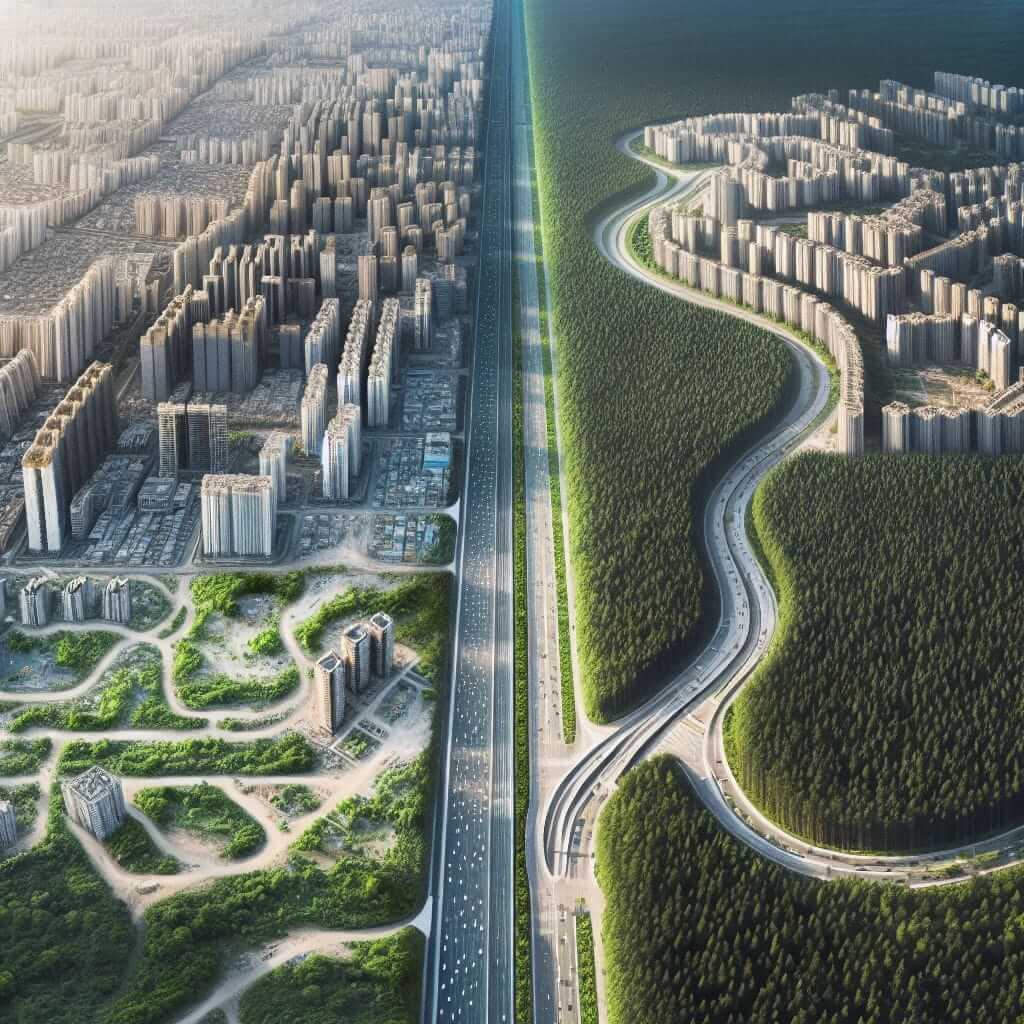The IELTS writing task 2 often presents essay prompts related to current global issues. One such recurring theme revolves around urbanization and its impact on the environment, particularly natural habitats. This topic holds significant relevance in today’s world as cities expand and encroach upon the natural world.
Here are a few ways this topic might be presented in the IELTS exam:
- Discuss the negative impacts of urbanization on natural habitats.
- To what extent do you agree that urbanization is detrimental to wildlife?
- Analyze the solutions to mitigate the negative impacts of urban sprawl on the environment.
Sample Essay: Analyzing the Impacts of Urban Sprawl
To what extent do you agree that urbanization is detrimental to wildlife?
Essay Analysis
This essay question requires you to take a stance on whether urbanization is entirely harmful to wildlife or if there are nuances to consider. You need to present a balanced view, acknowledging both sides of the argument while leaning towards your chosen stance. Remember to support your arguments with relevant examples and logical reasoning.
Model Essay
Urbanization, the increasing migration of people to urban areas, is a complex phenomenon with far-reaching consequences for the natural world. While it undeniably brings about economic growth and societal advancements, its impact on wildlife and their habitats is a subject of significant concern. I firmly believe that urbanization, if not managed sustainably, poses a grave threat to the delicate balance of our ecosystems.
Firstly, the most immediate and devastating impact of urbanization is habitat loss and fragmentation. As cities sprawl outwards, they consume vast swathes of forests, wetlands, and grasslands, which are natural homes to a myriad of species. This encroachment leads to habitat destruction, forcing animals into ever-shrinking territories where resources become scarce and competition intensifies. Consequently, many species are driven to the brink of extinction, their populations decimated by the loss of their ecological niches. For instance, the rapid urbanization in Southeast Asia has resulted in the endangerment of iconic species like the orangutan due to the destruction of their rainforest habitat for palm oil plantations and urban development.

Furthermore, the concrete jungles we create pose numerous threats to wildlife beyond habitat loss. Pollution from industrial activities, vehicle emissions, and urban waste contaminates air, water, and soil, poisoning wildlife and disrupting their delicate ecosystems. The relentless noise pollution from traffic, construction, and human activity disrupts animal communication, breeding patterns, and migration routes, further stressing already vulnerable populations. For example, light pollution from cities has been shown to disorientate migratory birds, leading them off course and causing exhaustion and increased mortality rates.
However, it is important to acknowledge that urbanization does not necessarily have to be a death knell for wildlife. With careful planning and implementation of sustainable practices, cities can mitigate their negative impacts and even become havens for some species. Green spaces, urban parks, and rooftop gardens can provide refuge and connectivity for wildlife, creating corridors for movement and reducing the isolating effects of habitat fragmentation. Moreover, promoting sustainable building practices, reducing pollution, and incorporating green infrastructure can create healthier urban environments that are more hospitable to both humans and wildlife.
In conclusion, while urbanization presents undeniable challenges to wildlife and their habitats, it is not an inherently insurmountable obstacle to their survival. By acknowledging the severity of the threats, embracing sustainable practices, and prioritizing the needs of wildlife alongside human development, we can strive to create urban environments that foster biodiversity and allow humans and animals to coexist harmoniously. (Word count: 388)
Writing Tips
- Structure: Follow a clear structure (introduction, body paragraphs with clear arguments, conclusion) to present your ideas coherently.
- Vocabulary: Use topic-specific vocabulary (habitat loss, fragmentation, urbanization, sustainable practices) to demonstrate your range.
- Grammar: Pay attention to grammar accuracy, particularly subject-verb agreement, article usage, and complex sentence structures.
- Examples: Support your arguments with relevant examples to make your points more persuasive.
Useful Vocabulary
- Urbanization (n) /ˌɜːrbənɪˈzeɪʃən/: The process of making an area more urban.
- Habitat loss (n) /ˈhæbɪtæt lɒs/: The destruction of natural habitats.
- Fragmentation (n) /ˌfræɡmənˈteɪʃən/: The process of breaking something up into smaller parts.
- Encroachment (n) /ɪnˈkroʊtʃmənt/: The act of gradually taking away someone else’s rights, space, etc.
- Sustainable (adj) /səˈsteɪnəbl/: Able to continue over a period of time.
- Mitigate (v) /ˈmɪtɪɡeɪt/: To make something less harmful, unpleasant, or bad.
- Biodiversity (n) /ˌbaɪoʊdaɪˈvɜːrsəti/: The variety of plant and animal life in the world or in a particular habitat.
- Ecological niche (n) /ˌiːkəˈlɒdʒɪkl niːʃ/: The role and position a species has in its environment.
- Green infrastructure (n) /ɡriːn ˈɪnfrəstrʌktʃər/: A network of natural and semi-natural areas that provide ecosystem services.
- Coexist (v) /ˌkoʊɪɡˈzɪst/: To exist at the same time or in the same place.
Conclusion
Understanding the impact of urbanization on natural habitats is crucial for IELTS writing task 2. Remember to analyze the essay question carefully, formulate a balanced argument, and support your ideas with relevant vocabulary and examples. With practice and a strong grasp of the topic, you can confidently tackle any essay question related to urbanization and its impact on the environment.